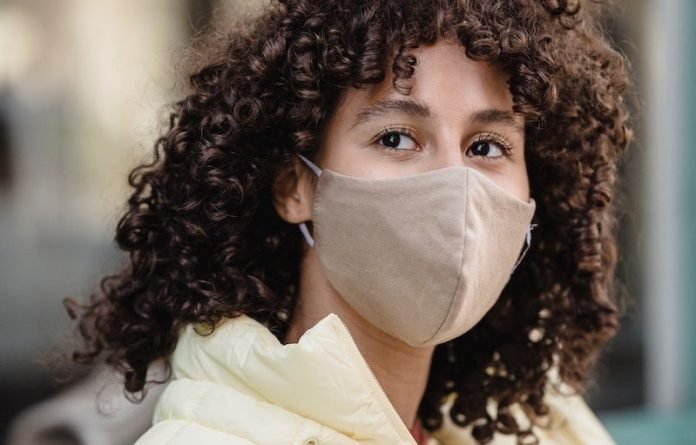
Four weeks ago, the XBB.1.5 variant caused less than 10% of COVID-19 cases in the U.S. Now it causes more than 25% of them.
Virologists including Andy Pekosz, a professor of Molecular Microbiology and Immunology, are paying attention. Should the general public be concerned?
Here, Pekosz explains what virologists are seeing, what this new variant means for case rates and treatments, and why it’s so important for more people to get the bivalent booster.
What is XBB.1.5?
The XBB family of variants emerged a few months ago and caught virologists’ attention because it contains more mutations to evade immunity than any other variant.
The XBB.1.5 variant has a mutation virologists believe is helping the virus better bind to cells and thus be more transmissible.
What’s happening now with this variant?
The XBB.1.5 virus has quickly become a higher percentage of total COVID cases in the United States.
However, we’re not seeing this variant cause the same type of surges in overall cases that omicron did when it entered the population last winter.
Virologists are watching XBB.1.5 due to its high number of mutations. For the rest of us, what’s most important to understand about this variant?
This latest variant should be a reminder that we have tools to fight off COVID infection and minimize severe disease:
The vaccines are still protecting against severe disease, and antivirals are still capable of treating infection from XBB.1.5. We just have to use these tools more effectively than we have over the last six months.
What does the transmission timeline look like for XBB.1.5?
The period of infectiousness for XBB.1.5 is very similar to that of the other omicron variants that have been circulating over the past year:
You are contagious one to two days before your symptoms begin, and you are still contagious for at least two to three days after your symptoms begin—though some people can continue to have the detectable live virus for up to a week after symptom onset.
After exposure, it may take 5 days before you begin to develop symptoms.
Are people who’ve already had COVID more likely to be reinfected by XBB.1.5?
We don’t have firm numbers yet, but based on what we know about the XBB variants, someone who has been infected with an earlier omicron variant is likely susceptible to reinfection with XBB.1.5.
This is for two reasons: The XBB.1.5 variant is more immune-evasive, and a person’s immune response naturally decreases over time following infection.
Do we know yet how well the latest bivalent boosters work against this variant?
Lab studies suggest that the bivalent vaccine is still effective in protecting against severe disease, though perhaps not as much against infection.
XBB.1.5 is derived from the omicron variant BA.2, and while the current bivalent vaccine was developed for the BA.5 variant, it has been shown to generate antibodies that recognize BA.2.
If you got a bivalent booster when it was first available, should you be considering another booster now?
There is no guidance yet for if or when a second bivalent booster would be recommended.
As of now, only about 15% of eligible individuals have received their bivalent booster, so the bigger concern is for people who have not yet gotten one to go out and get it.
Should people who haven’t gotten a bivalent booster yet still get it? Or should they wait for a new booster that addresses the latest variants?
Get the bivalent booster. Don’t wait.
This is particularly important for those in high-risk groups, but it goes for all eligible individuals.
For those who haven’t gotten a bivalent booster, their last vaccine dose or booster may have been six months or a year ago, or more. Those individuals are more susceptible to infection and severe disease.
We don’t know yet what the plan is for an updated bivalent booster, and the current one still does the primary thing we want a vaccine to do: help prevent people from being hospitalized or dying.
Is Paxlovid still effective? Why does it seem like it’s so hard for people to get?
Paxlovid is still working very well, particularly in high-risk populations, but it’s not being prescribed as frequently as it should be.
One reason may be that the possibility of a “Paxlovid rebound” has caused some patients to be leery of taking the drug.
There are also some medications that Paxlovid is not compatible with, so health care providers need to ensure they are aware of exactly what a patient may already be taking before prescribing it.
But overall, for the vast majority of people, Paxlovid is still a good drug to be prescribed if you get COVID-19.
What might we expect in terms of case rates over the next few weeks?
Case rates will likely go up. We’re also coming out of a period when we already expected transmission to go up, due to increased travel and holiday gatherings.
Because XBB.1.5 arose around Thanksgiving, we’re still figuring out how much transmission is a result of the seasonal activity we had anticipated and how much is being driven specifically by XBB.1.5.
There may be some delay in getting the most accurate data, due to some labs being closed for the holidays, but over the next couple of weeks, that data will catch up and December data may be revised.
That will give us a much better sense of what’s happening with this latest variant.
If you care about COVID, please read studies about the cause of severe COVID symptoms, and new therapy from bananas may help treat COVID-19.
For more information about COVID, please see recent studies about fasting methods linked to less severe COVID-19, and results showing the biggest risk factors for COVID-19 death.



